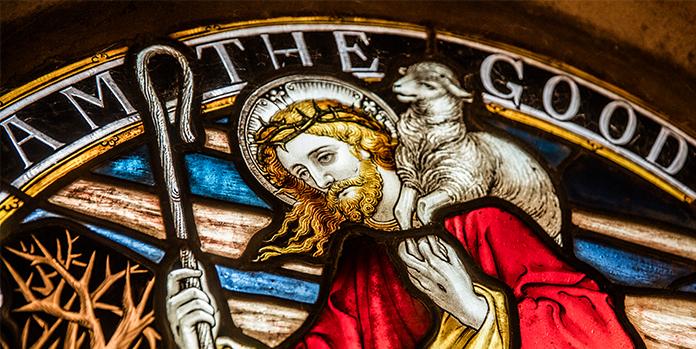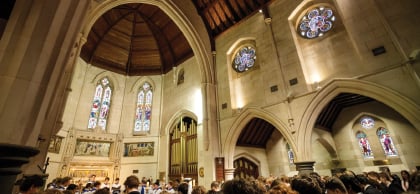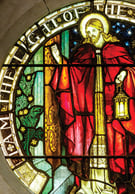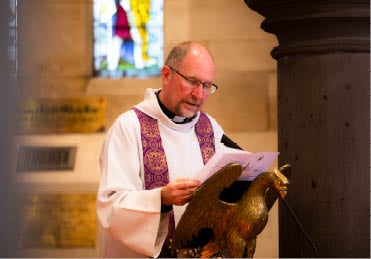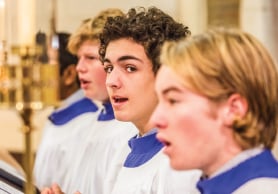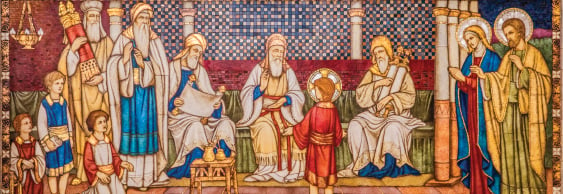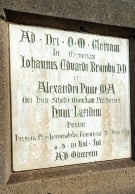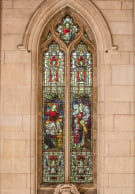The Chapel of St Peter is the spiritual heart of the School. Its light-filled interior is an aesthetic joy, offering an experience of great beauty and luminosity through silence, prayer and music. Its significant physical presence in the Quad, which is the centre of Senior School life, reflects the importance that is accorded to the Anglican tradition and to spiritual exploration in the educational program.
The Chapel invites students to experience the rich liturgical tradition of the Anglican Church: the prayers, readings, songs and music; and to participate in the religious festivals and the rhythm of Church life.
The Chapel is used by both Wadhurst and Senior School students.
Click on an image to find out more.
History of the Chapel
On 3 May 1893, the Bishop of Melbourne, The Right Rev’d Field Flowers Goe, opened and dedicated the Chapel of St Peter for Divine service.
The work to establish the Chapel began in 1875 when the newly appointed Headmaster, Edward Morris, spoke of his vision for a chapel ‘where our work may be more directly dedicated to Him whom we serve’. When that vision finally became a reality in 1893, it was due to the generosity of the School community, especially Old Melburnians.
About the Chapel
The Chapel of St Peter is a jewel of the Gothic Revival style, which was the architectural style of choice for churches in the 19th century. Its architect was Arthur E Johnson (1821–1895) of the Melbourne firm of Smith and Johnson.
The Chapel is a beautifully proportioned building, with a lofty, open timber roof. It is designed in the traditional shape of a Latin cross, with a nave, transepts, choir and organ vestry, with seating for 300 people. The external walls are bluestone, with the facings of the windows and doorways in Waurn Ponds freestone and the interior linings in New Zealand Oamaru limestone. The bluestone and limestone are veneers to a brick core, with the bricks still evident inside the turret and the organ chamber.
The Chapel houses many notable stained glass windows as well as three outstanding examples of optus sectile panels under the chancel windows. It is also the repository of many of the hopes, prayers, joys and sorrows of the Melbourne Grammar School community reflected, in part, through the memorial tablets that line the Chapel’s walls.
